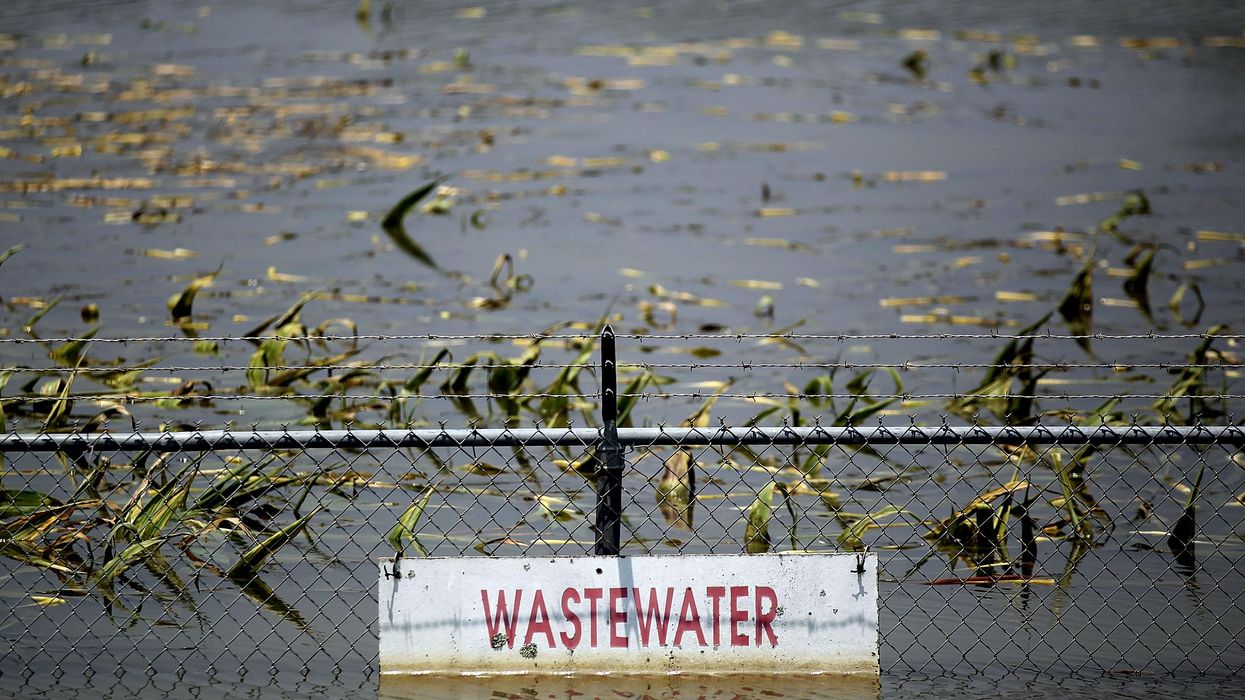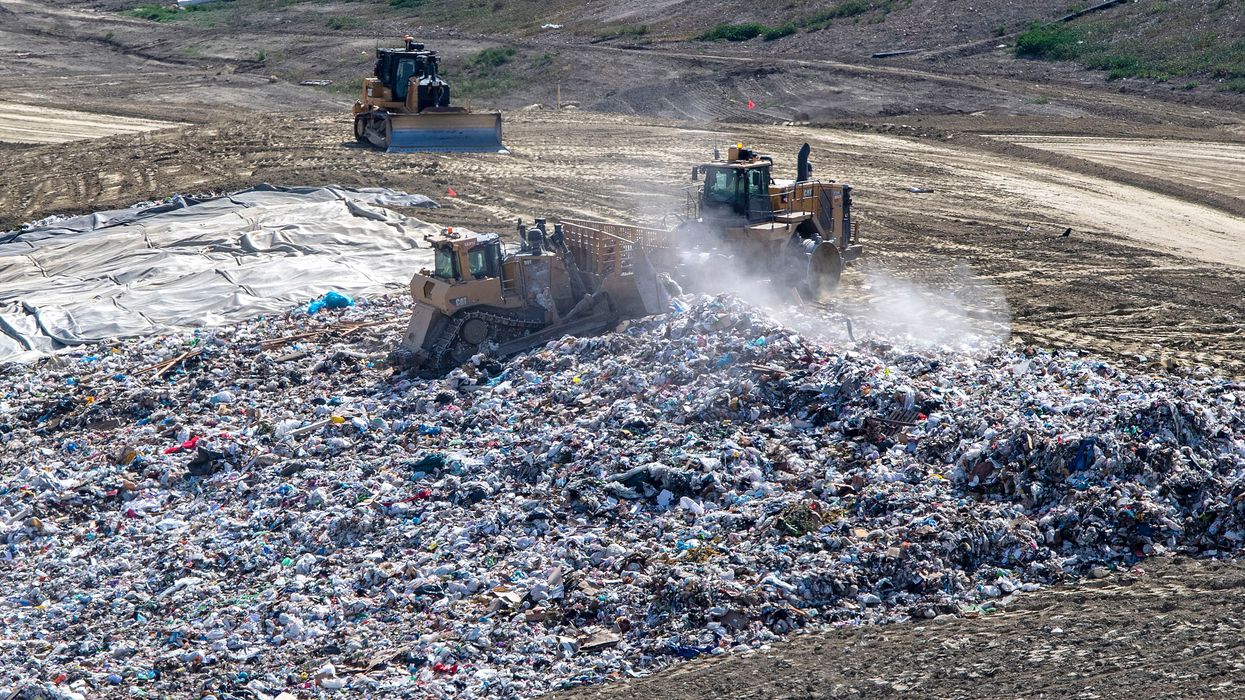'The Threat Is Extremely Real': Advocates Sound Alarm Over Trump 'Energy Emergency'
"We truly urge policymakers, stakeholders, and the public to see these executive orders for what they truly are: an unnecessary and counterproductive retreat to outdated energy strategies."
On the first day of his second term, U.S. President Donald Trump announced he was fulfilling his campaign promise to "drill, baby, drill" by declaring a "national energy emergency." The declaration seeks to spur the "identification, leasing, development, production, transportation, refining, and generation" of every energy source except for wind, solar, battery storage, and improved efficiency.
But what exactly does this mean, and how much damage could it do to local communities, energy prices, the global climate, and the nation's leadership in the green energy transition? Quite a lot, a panel of energy policy experts warned on Wednesday.
"These executive orders and this administration are sending us down exactly the wrong path," said senior attorney at the Southern Environmental Law Center Megan Gibson. "By attempting to fabricate a national energy emergency, these orders set the stage toward increased fossil fuel extraction, transmission, use, and export. This is all over cleaner, more affordable technologies that we have and are commercially scalable."
The National Security Justification
Tyson Slocum, director of Public Citizen's Energy Program, warned that "the threat is extremely real, and here right now, that Trump is going to seek to push unneeded fossil fuel projects."
Trump gave himself a major tool to accomplish this in the declaration by evoking national security. Specifically, Section 7 orders Secretary of Defense Pete Hegseth to conduct an assessment of the department's access to the energy needed to "protect the homeland" and present it within 60 days, or by March 21. The report should examine any vulnerabilities, with a special emphasis on the Northeast and West Coast, where local and state Democratic governments have rejected new fossil fuel projects on climate grounds.
While Trump tried to use national security justifications to speed fossil fuel development during his first term, he was stymied in part by opposition within government agencies. That is less likely to be the case now.
"There is no question that when you add national security designations to civilian energy infrastructure projects, you're putting in the crosshairs any civil servant or citizen who seeks to deviate from Trump's line."
"He has now purged agencies of opposition and has much firmer control over the national security apparatus that he's going to need to use national security justifications for this energy emergency declaration," Slocum said.
Therefore, Hegseth's report could be used to, for example, claim that the energy needs of military bases in the Northeast require the revival of the Constitution pipeline that would bring fracked gas from Pennsylvania to New York, which state leaders had previously rejected.
"This is about a larger issue of attacking parts of the country that didn't vote for him and parts of the country that also have enacted a number of laws and regulations promoting action on climate change and promoting renewables," Slocum said. "And so this is part of a general attack on state leadership of those states that he sees as not being accommodating enough to fossil fuels."
At the same time, the emergency declaration could be used as part of a negotiating tactic with Democratic state leaders. To take New York as an example again, Trump might persuade Gov. Kathy Hochul to accept the Constitution pipeline in exchange for allowing offshore wind or ending opposition to congestion pricing.
"Trump will either force his agenda upon unwilling states, or he will use it as a club to bully them into doing it as part of a horse-trading maneuver," Slocum said.
Using the national security justification could also make it easier for the administration to crack down on not only civil society protests against these projects, but stubborn opposition from local leaders as well. Even elected officials who pushed back, Slocum warned, could be labeled terrorists.
"There is no question that when you add national security designations to civilian energy infrastructure projects, you're putting in the crosshairs any civil servant or citizen who seeks to deviate from Trump's line," he said.
Cutting Corners
Another provision of the emergency declaration being monitored by advocates is Section 4, which calls on heads of agencies to alert the Army Corps of Engineers to projects they want to see prioritized. The Corps plays an important role in issuing 404 permits for any infrastructure that is built through or beneath a body of water. It also has the authority to rush its permitting process—including by waving or truncating a National Environmental Policy Act (NEPA) review—in the case of an emergency.
Shortly after Trump's declaration, the Army Corps listed several "emergency"-designated projects on its website. However, David Bookbinder, director of law and policy at the Environmental Integrity Project, pointed out, "none of those projects, not a single one, meets the Corps' own definition of what an emergency is."
The Corps can rush a project through only if not doing so poses an immediate threat to life, property, or economic well-being, and it has historically only done so in the aftermath of natural disasters such as floods or hurricanes.
"In the long run, the question is how many times is the Corps going to make groups sue them?"
"No one has ever tried to speed up permitting on the basis of a national energy emergency, let alone a clearly fictitious one," Bookbinder said.
The Army Corps immediately removed the emergency designations of projects on its website once they were discovered, and groups including Bookbinder's have filed Freedom of Information Act requests with the Corps to find out what projects other agencies have told it to fast-track. Those requests are due around the beginning of April.
"As soon as they try permitting one of these projects, cutting the corners and speeding up a permit by designating it as, quote, an emergency, that permit will be challenged," Bookbinder said. "And in the long run, the question is how many times is the Corps going to make groups sue them?"
In the long-term, advocates say, the administration may attempt to use the Corps' ability to rush "emergency" projects in order to bypass NEPA altogether, ignore court orders that try to stop it, and undermine agencies that push back. While the Federal Energy Regulatory Commission (FERC) is supposed to be independent, for example, Trump on Tuesday fired the two Democratic commissioners on the Federal Trade Commission.
"We are very concerned that should Trump perceive any roadblocks at FERC to his energy emergency declaration that he would have no qualms forcibly removing independent FERC commissioners from their seats and replace them with compliant commissioners," Slocum said. "So this is not bluster."
Ultimately, Slocum added, "we are in an era right now where the only norm is Trump is going to violate it."
Who Benefits?
While the Trump administration is trying to rush through fossil fuel projects, the panelists were clear that his energy agenda will not benefit the majority of U.S. communities and ratepayers.
"If we continue down this path, this self-destructive path, we will miss out on an opportunity to build a vibrant, sustainable energy economy that benefits all Americans, that will actually secure our national energy independence, and would position our country for long-term economic success," Gibson said.
So who will benefit? The clue comes in part in a closed-door meeting the Trump administration held with oil and gas executives in the White House, also on Wednesday.
"Advocates must keep challenging approvals through litigation and public pressure—making the case that the project can and should be denied if there is no genuine need or if adverse impacts are overwhelming."
"After spending $450 million in the last election to elect Trump and install friendly lawmakers on Capitol Hill, fossil fuel executives are getting what they paid for," Slocum said in a statement about the meeting. "We know precisely what the oil industry will do with decreased costs stemming from Trump's deregulation: They will pocket the savings and shower executives and wealthy investors with bonuses and dividends."
"Under Trump, fossil fuel corporations will accelerate the transfer of wealth from consumers to billionaires while exposing millions of Americans to more pollution and delaying the transition to clean energy for as long as possible," he continued.
Slocum further told Common Dreams that "the fossil fuel industry's close ties to Trump and key Trump officials will play a role in decisions Trump has made and will continue to make on the energy emergency declaration and implementation."
Gibson said the emergency declaration was "perpetuating a pattern where major fossil fuel corporations reap substantial profits while the American public and communities have to deal with rising energy prices, higher utility bills, a weakened domestic energy system, not to mention extreme and lasting harms to our communities and our health."
In response, she called on "unlikely partners and coalitions to push for a modern, democratically grounded energy policy that benefits the public."
'It's essential that we continue to hold regulators accountable: Many of FERC's decisions have disregarded states' and communities' objections. Advocates must keep challenging approvals through litigation and public pressure—making the case that the project can and should be denied if there is no genuine need or if adverse impacts are overwhelming," she said.
"We truly urge policymakers, stakeholders, and the public to see these executive orders for what they truly are: an unnecessary and counterproductive retreat to outdated energy strategies," Gibson said. "The real emergency here isn't a lack of fossil fuel extraction, transmission, or export. It's lack of vision and courage, and competent governance to embrace the modern clean energy economy we know we need and deserve."


